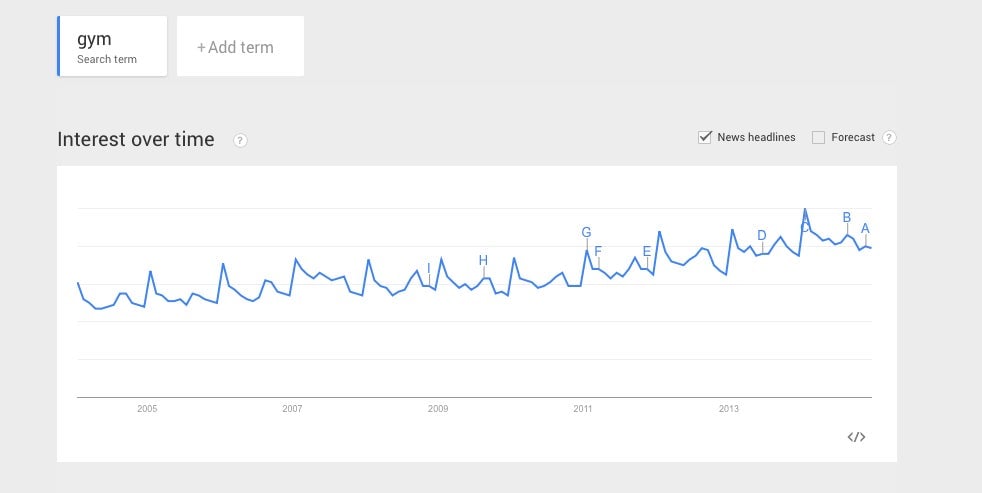This is why you should not get that very discounted gym membership
Making a new year’s resolution to join a gym is like going grocery shopping on an empty stomach: you end up spending more than you should.


Making a new year’s resolution to join a gym is like going grocery shopping on an empty stomach: you end up spending more than you should.
It sure looks tempting, with health and fitness clubs slicing their prices for the new year: between reduced enrollment fees and membership discounts, January offers some of the best deals on exercising, right as you feel like you need it most. Everyone else is thinking the exact same way—for at least, say, a couple of weeks?

All those toasts and holiday dinners before New Year’s result in a commitment that’s easily expected to last long enough to make the purchase of an annual health club membership seem worthwhile (pdf). But people’s relationship with exercise follows a pattern—there is high interest in January, with some fitness chains reporting a 40% increase in foot traffic in the days after Jan. 1, followed by steady decline through the year. And 67% of gym members never even access the gym.
And this is exactly how gyms tend to make money—by exploiting two of the strongest forces known to humankind: guilt, and laziness. They want you even if you know you won’t go back—in fact, they want you because they know you won’t go back. A successful gym does not have the physical space to host all of its members: essentially, it’s counting on a large percentage of them to never show up.
The average gym attendance ends up being lower than 4.8 times a month, according to a 2005 study by economists from Stanford University and the University of California, Berkeley. This means for most users, paying the seemingly steeper price for one-time entry, or a monthly renewal, would be more convenient.
Instead, the well-meaning couch potatoes subsidize the cost of memberships for people who actually attend the gym regularly—as do those buy additional services available at clubs; they account for the other profitable type of members.
There have been attempts to add attendance incentives to the elements of gym economics. In 2011, two Harvard graduates devised a business model where the customer would pay a penalty for not showing up a minimum amount of times, and founded a business they called Gym-Pact. The advantages they saw from a more engaged membership included a higher probability of customers buying tailored services, and a reduced likelihood of cancellations.
Gym-Pact is now simply Pact, and has evolved in something slightly different from what it was initially devised to be: it’s more of a community-based healthy living app. Its tagline explains how the product works—as well as summarizing the old gym model, proving that moving away from it is perhaps not so easy: “Earn cash for living healthy, paid by members who don’t.”